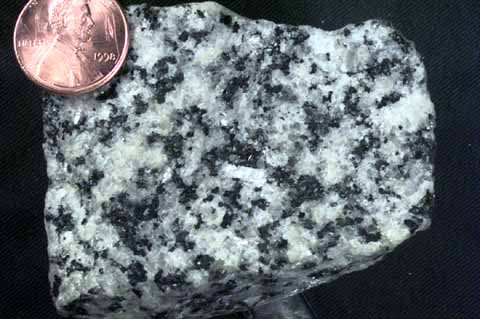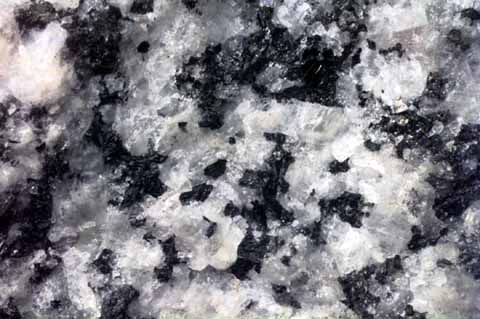igneous rocks
metamorphic rocks
sedimentary rocks
|

Description
Grano diorite i s typically intermediate colored with a subequal mixture of light colored sodium plagioclase/quartz, and dark colored amphibole and biotite. Appearance, like diorite, is often described as "salt and pepper" because of the mix. In this specimen some of the quartz grains can be seen as smooth light gray grains scattered among the white feldspars.
Typical Minerals
Na/ca plagioclase - ~ 50%
quartz - > 20%
amphibole/biotite - 10-25%
Tectonic Association
Grano diorite, like diorite, is the result of fractional melting of a mafic parent rock above a subduction zone. It is commonly produced in volcanic arcs, and in cordilleran mountain building (subduction along the edge of a continent, such as with the Andes Mountains). It emplaces in large batholiths (many thousands of square miles) and sends magma to the surface to produce composite volcanoes with andesite lavas.
Detail

Description
|